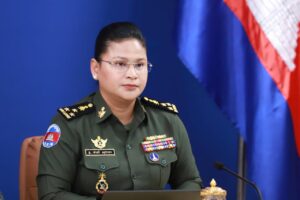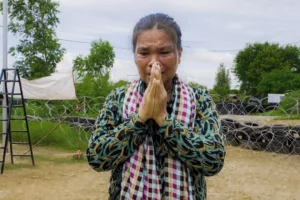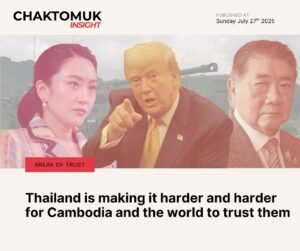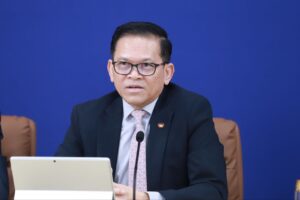Press Briefing – Update on the implementation of the immediate and unconditional ceasefire agreement between Cambodia and Thailand
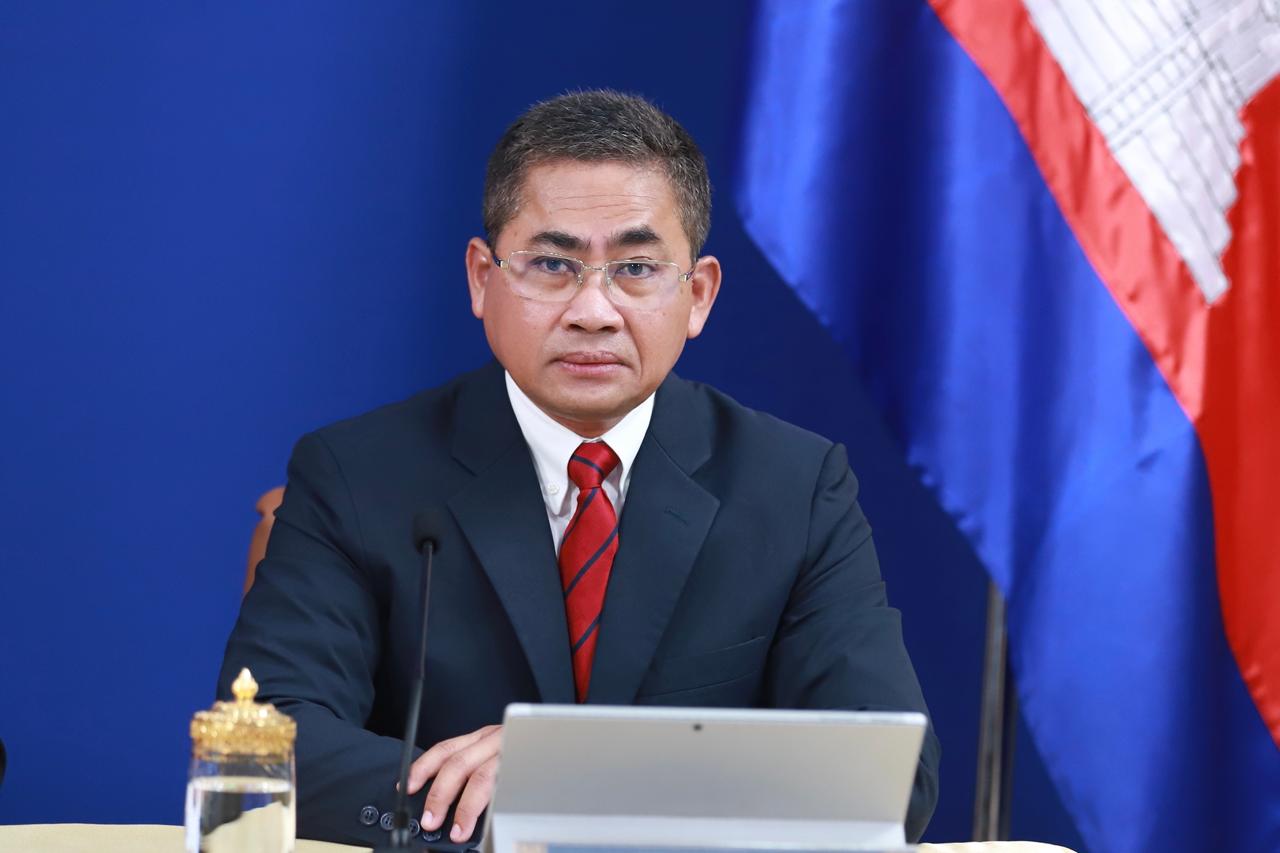 Press Briefing – Update on the implementation of the immediate and unconditional ceasefire agreement between Cambodia and Thailand
Press Briefing – Update on the implementation of the immediate and unconditional ceasefire agreement between Cambodia and Thailand
Keynote Address by H.E. Nong Sakal, Under Secretary of State of the Ministry of Foreign Affairs and International Cooperation (MFAIC):
7:00AM, August 22, 2025
Today, I would like to brief you about some developments relating to the border situation within the framework of diplomatic and international measure being implemented during the ceasefire agreement achieved on July 28, 2025 between Cambodia and Thailand.
1) On August 21, 2025, the MFAIC organized a Briefing on the development of situation along Cambodia-Thailand border.
The Briefing was chaired by H.E. Deputy Prime Minister Prak Sokhonn, Minister of Foreign Affairs and International Cooperation of Cambodia. The event was attended by a total of 77 participants from 64 institutions. Among them were representatives of foreign diplomatic missions accredited to Cambodia with residence in Phnom Penh and non-residence. 14 missions are the non-residence, our of them 10 from Bangkok, 3 from Hanoi, and 1 from Beijing. In addition to that, 22 international organizations were present.
He had highlighted on 5 main points as follows:
H.E. the Deputy Prime Minister has started the briefing by expressing that Cambodia speaks today as a country that has endured the scars of conflict and who knows too well the devastating cost of war. It is precisely because of this experience that we always choose peace over confrontation. We believe firmly that disputes between nations must be settled through dialogue, international law, and cooperation—not through force.
From the very beginning of the crisis, Cambodia has worked tirelessly to deescalate tensions and to restore calm.
On the Fragility of the Ceasefire – He had pointed out that Cambodia continue to observe some violations, including encroachments through the laying of barbed wire and the destruction of civilian infrastructure in and outside the conflict zones (in provinces of Preah Vihear, Oddor Meanchey, Pusat, and Banteay Meanchey), continued military activities such as the construction of new roads, bunkers, and trenches in disputed areas, as well as the continuing detention of 18 Cambodian soldiers. These actions undermine trust and make the ceasefire fragile. Therefore, the establishment of the Interim Observer Team led by Malaysia and the prompt establishment of the AOT is essential.
Cambodia has abided by the agreed ceasefire and the spirit of the MOU 2000.
On the Normalization of Bilateral Relations: H.E. the Deputy Prime Minister underscored that –Cambodia believes peace cannot be restored if border communities remain trapped in fear and displacement. That is why, we have proposed practical steps to return relations to normalcy. These should start with the discussions on reopening border checkpoints and facilitating the free flow of people and goods, cross border crimes, and humanitarian demining.
On Transnational Crimes: He underlined that cooperation against transnational crime is a priority for Cambodia. Cambodia and Thailand have had good cooperation in fighting and preventing transnational crimes, including illicit drug and arms smuggling, human trafficking, cross-border smuggling of cultural artifacts, and cybercrimes. Regarding online scams, in July 2022, MPTC Cambodia signed an MOU with Thai Ministry of Digital Economy and Society to strengthen cooperation to prevent and crack down on transnational technology crimes. Cambodia reiterates its firm commitment to jointly address the cross-border crimes, including the newly emerging issues of online scams.
On Humanitarian Mine Action: H.E. Deputy Prime Minister stated that Cambodia categorically rejects all accusations and recalled that minefields in Cambodian territory are remnants of past conflicts from the 1970s to the late 1990s, that have not yet been cleared. Cambodia has transformed from a victim of landmines into a contributor to global mine action. In addition, Cambodia has deployed over 10,000 deminers, including peacekeepers, to UN peacekeeping missions in nine countries.
In this regard, Cambodia remains strongly committed to working with partners toward achieving a Mine-Free Cambodia by 2030 – He proposed that as steps forward, Cambodia and Thailand explore priority border areas for humanitarian mine clearance – particularly areas where people are living and where clearance would directly serve socio-economic needs, protect civilian lives on both sides, Cambodia and Thailand jointly identify priority border areas for humanitarian demining, particularly those with resident populations, and areas where clearance directly serves socio-economic needs, protects civilian lives of both countries, and contributes to regional stability. (Technical details are not elaborated here.
In conclusion of his briefing – H.E. Deputy Prime Minister underlined that Cambodia’s approach to resolving the border dispute is firmly based on international law and historical treaties and agreements long recognized by both Cambodia and Thailand.
2) Separately, I would like to briefly inform that the Ministry of Foreign Affairs and International Cooperation of Cambodia has organized a two-day field visit, on August 22–23, 2025, for the diplomatic corps, UN agencies accredited to Cambodia, and other international organizations to directly inspect border areas in Oddar Meanchey, Banteay Meanchey, and Siem Reap provinces. The delegation will be led by H.E. Deputy Prime Minister Prak Sokhonn, Minister of Foreign Affairs of Cambodia. The delegation will see inspect various locations such as to see the newly installed barb wire, nets and tires and other places considered under violation and infiltrated into the territory of Cambodia by the other side.
This field visit is attended by 63 participants, including ambassadors, chargé d’affaires, representatives of UN agencies, international organizations, and international NGOs, both resident and non-resident. More detailed information will be provided in a press release of the Ministry of Foreign Affairs of Cambodia.
The main purpose of this field trip is to present the reality of the consequences of the armed conflict, the displacement of civilians in affected areas, and to show the latest developments following the ceasefire. As we are already aware, many new activities have taken place, including clearing, digging of trenches, and laying of tire barricades at various border points, all of which have raised concerns regarding the implementation of the ceasefire.
I thank you for your attention!


